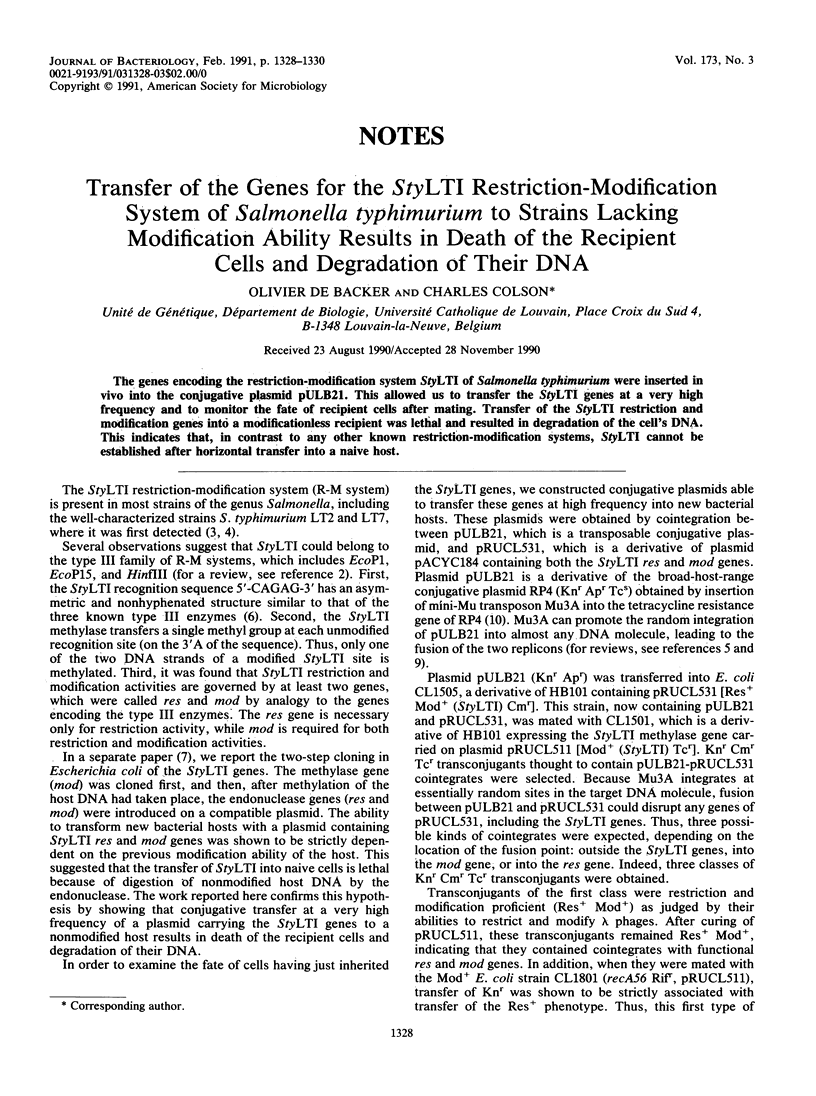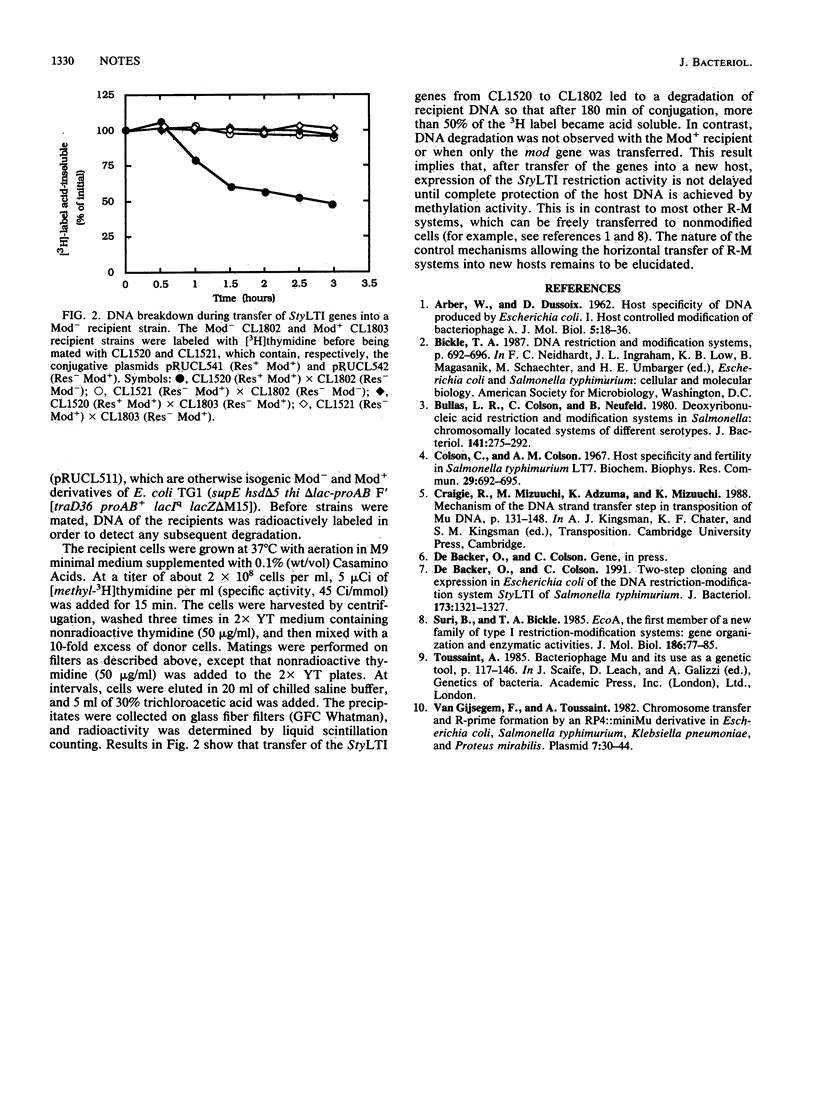Abstract
The genes encoding the restriction-modification system StyLTI of Salmonella typhimurium were inserted in vivo into the conjugative plasmid pULB21. This allowed us to transfer the StyLTI genes at a very high frequency and to monitor the fate of recipient cells after mating. Transfer of the StyLTI restriction and modification genes into a modificationless recipient was lethal and resulted in degradation of the cell's DNA. This indicates that, in contrast to any other known restriction-modification systems, StyLTI cannot be established after horizontal transfer into a naive host.
Full text
PDF


Selected References
These references are in PubMed. This may not be the complete list of references from this article.
- ARBER W., DUSSOIX D. Host specificity of DNA produced by Escherichia coli. I. Host controlled modification of bacteriophage lambda. J Mol Biol. 1962 Jul;5:18–36. doi: 10.1016/s0022-2836(62)80058-8. [DOI] [PubMed] [Google Scholar]
- Bullas L. R., Colson C., Neufeld B. Deoxyribonucleic acid restriction and modification systems in Salmonella: chromosomally located systems of different serotypes. J Bacteriol. 1980 Jan;141(1):275–292. doi: 10.1128/jb.141.1.275-292.1980. [DOI] [PMC free article] [PubMed] [Google Scholar]
- Colson C., Colson A. M. Host specificity and fertility in Salmonella typhimurium LT7. Biochem Biophys Res Commun. 1967 Dec 15;29(5):692–695. doi: 10.1016/0006-291x(67)90272-0. [DOI] [PubMed] [Google Scholar]
- De Backer O., Colson C. Two-step cloning and expression in Escherichia coli of the DNA restriction-modification system StyLTI of Salmonella typhimurium. J Bacteriol. 1991 Feb;173(3):1321–1327. doi: 10.1128/jb.173.3.1321-1327.1991. [DOI] [PMC free article] [PubMed] [Google Scholar]
- Suri B., Bickle T. A. EcoA: the first member of a new family of type I restriction modification systems. Gene organization and enzymatic activities. J Mol Biol. 1985 Nov 5;186(1):77–85. doi: 10.1016/0022-2836(85)90258-x. [DOI] [PubMed] [Google Scholar]
- Van Gijsegem F., Toussaint A. Chromosome transfer and R-prime formation by an RP4::mini-Mu derivative in Escherichia coli, Salmonella typhimurium, Klebsiella pneumoniae, and Proteus mirabilis. Plasmid. 1982 Jan;7(1):30–44. doi: 10.1016/0147-619x(82)90024-5. [DOI] [PubMed] [Google Scholar]


